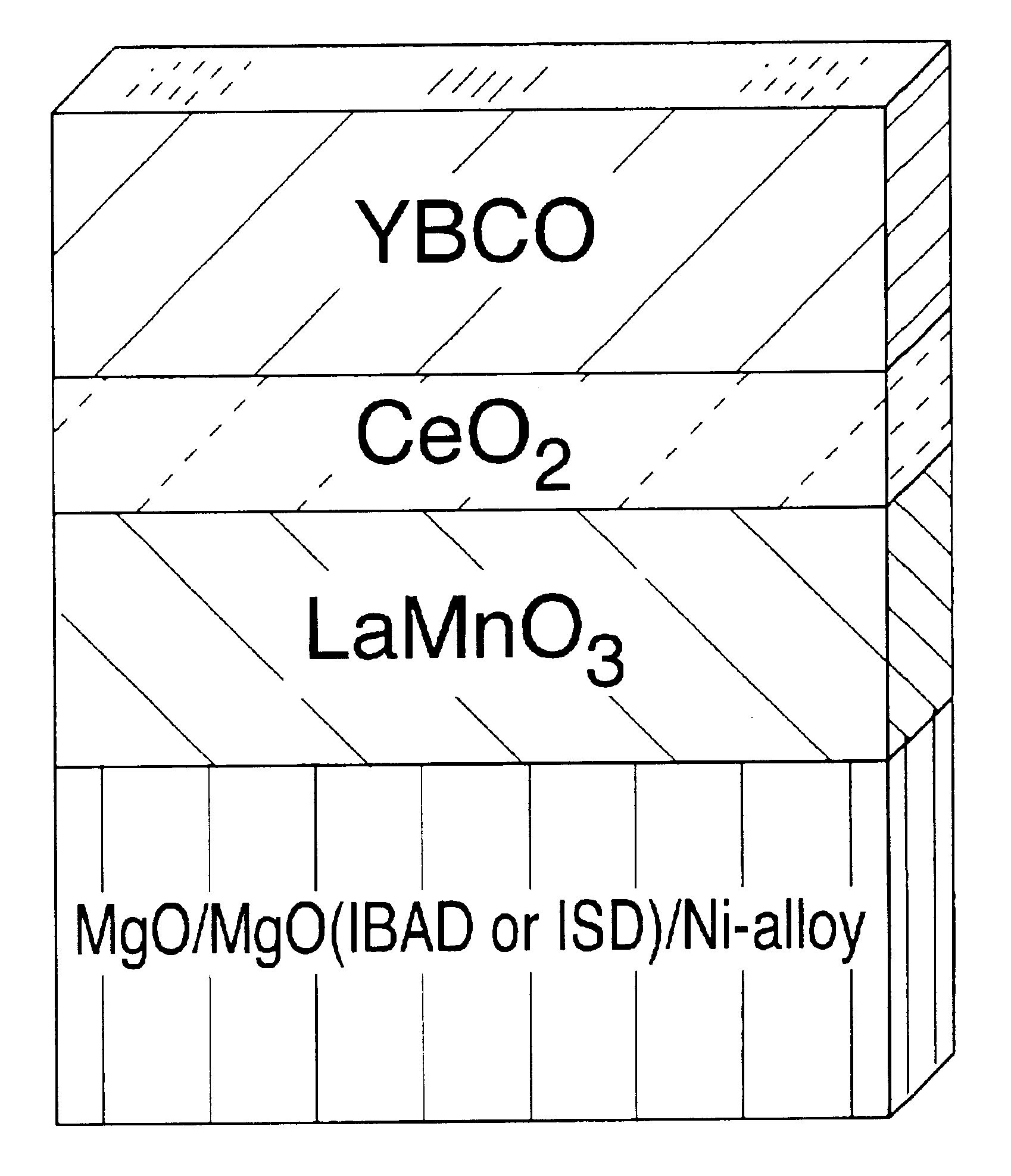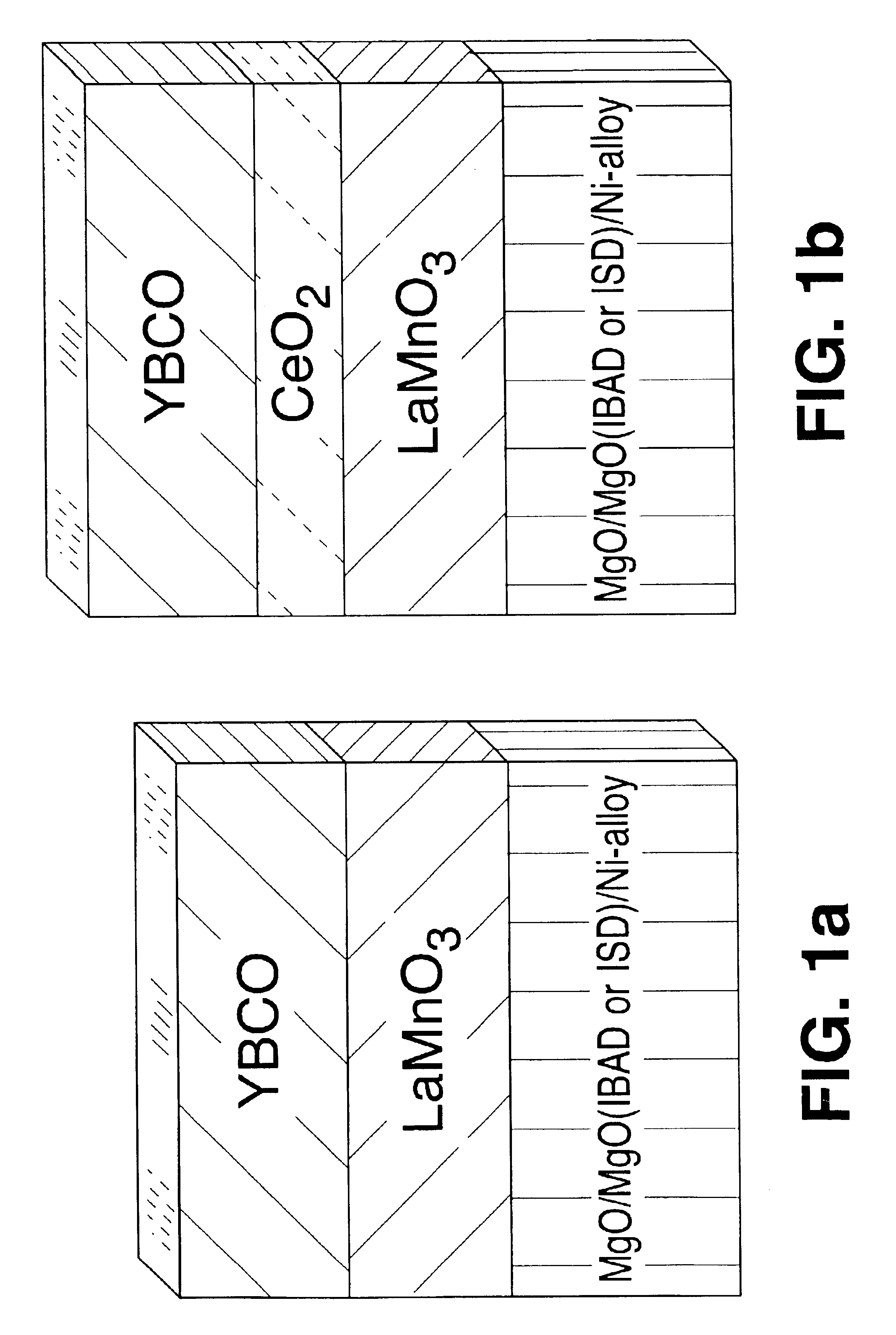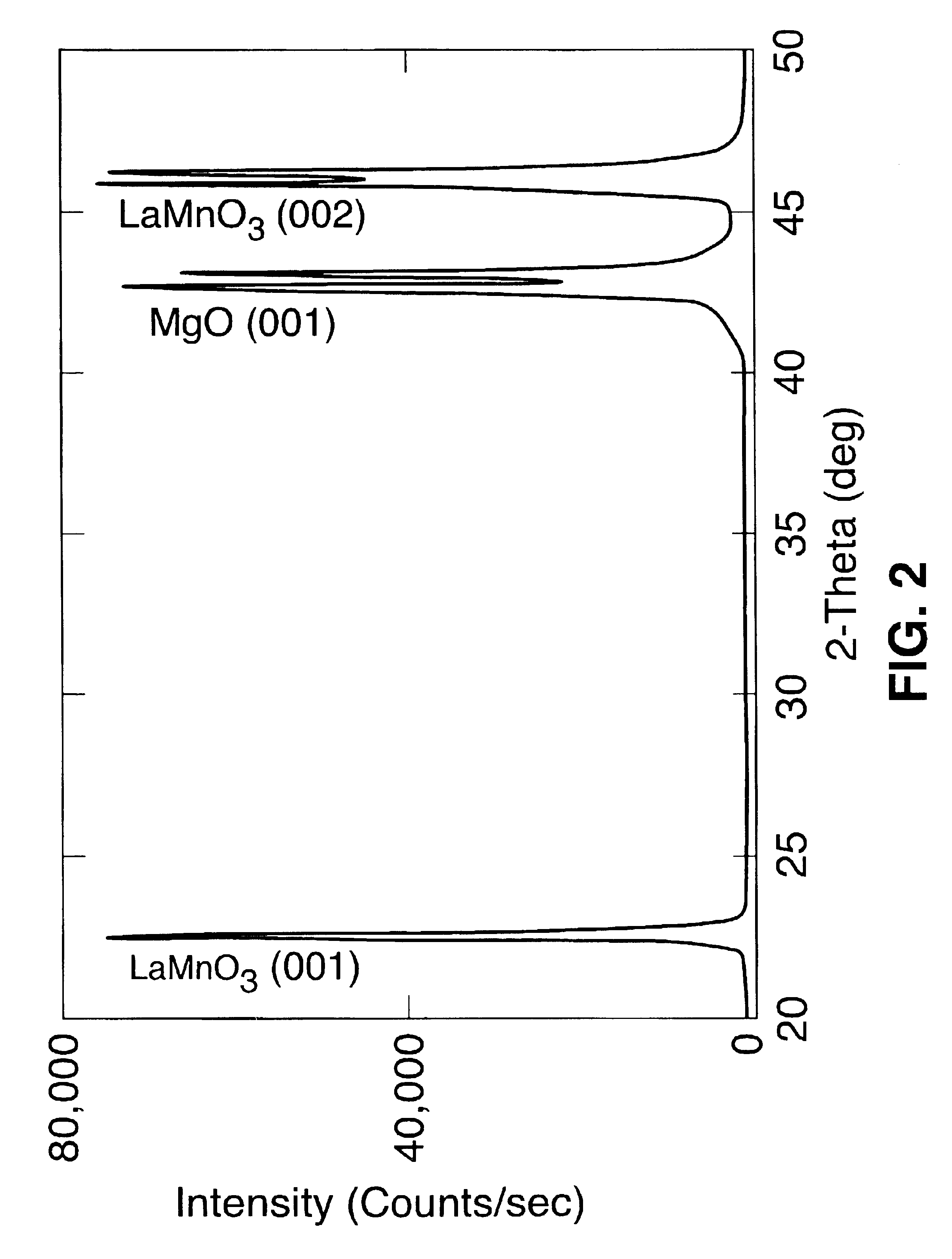Buffer layers and articles for electronic devices
a buffer layer and electronic device technology, applied in the direction of superconducting magnets/coils, magnetic bodies, natural mineral layered products, etc., can solve the problems of unable to insertion oxides in the perovskite structure, and unable to achieve high-j.sub.c epitaxial ybco film
- Summary
- Abstract
- Description
- Claims
- Application Information
AI Technical Summary
Benefits of technology
Problems solved by technology
Method used
Image
Examples
example ii
Growth of LMO on a Metallic Substrate by Sputtering Followed by YBCO Deposition
In this example, the development of a suitable buffer layer architecture for YBa.sub.2 Cu.sub.3 O.sub.7 (YBCO) coated conductors using the BF method to produce the YBCO is described. The architecture comprises LMO, as a buffer layer between the YBCO and a metallic substrate or a metallic substrate coated with a suitably selected additional buffer layer or buffer layer stack. The YBCO is deposited and epitaxially grown directly onto the LMO. To test the compatibility of LMO, a substrate was provided consisting of biaxially textured, rolled Ni tape coated with an epitaxial Gd.sub.2 O.sub.3 buffer layer. A dense and crack-free layer of LMO was grown epitaxially onto the Gd.sub.2 O.sub.3. A YBCO layer with a thickness of 0.3 .mu.m then was grown onto the LMO using the BF method. First a non-superconducting precursor layer was deposited onto the LMO by electron-beam co-evaporation of Y, BaF.sub.2, and Cu. The ...
example iii
Growth of RMnO.sub.3 on Textured Substrates where R Comprises at Least One of Ce, Pr, Nd, Pm, Sm, Eu, Gd, Tb, Dy, Ho, Er, Tm, Yb, Lu, and Y
Very recent reports indicate and confirm that many new compounds besides LMO exist in the general chemical formula RMnO.sub.3, where R can be Ce, Pr, Nd, Pm, Sm, Eu, Gd, Tb, Dy, Ho, Er, Tm, Yb, Lu, or Y. RMnO.sub.3 compounds crystallize in orthorhombic structure [space group Pbnm (D.sup.16.sub.2h) and Z=4] for R with larger ionic radius where R may be La, Ce, Pr, Nd, Pm, Sm, Eu, Gd, Tb, or Dy. For further details, refer to L. Martin-Carron, A. de Andres, M. J. Martiniz-Lope, M. T. Casais, and J. A. Alonso, J. of Alloy and Compounds, 323-324 (2001) 494-497. For this set, the ionic radius varies between 1.15 .ANG. and 0.99 .ANG..
For compounds with smaller ionic radius (R may be Ho, Er, or Y), either the orhorhombic or the hexagonal structure [space group P6.sub.3 cm(C.sup.3.sub.6v) and Z=7] can be obtained. For further details, refer to M. N. Iliev...
example iv
Growth of MgO on a Biaxially Textured Metal Substrate by e-beam Evaporation Followed by LaMnO.sub.3 (Using Sputtering) and YBCO Deposition
An electron beam (e-beam) evaporation technique was used to deposit Magnesium Oxide, MgO films directly on biaxially textured Cu or Cu-alloys or Ni or Ni-alloys. The as-rolled Cu substrates were cleaned ultrasonically with both acetone and methanol and recrystallized to the desired {100} cube texture by annealing the substrates at 800.degree. C. for 1 hour in a vacuum of 10.sup.-6 Torr. Biaxially oriented Cu substrates were mounted on a substrate holder with a heater assembly in the e-beam system. After the vacuum in the chamber had reached 1.times.10.sup.-6 Torr at room temperature, the substrate was then heated in the range of 300 to 700.degree. C. and MgO layers were deposited at that temperature. The preferred deposition temperature is about 400.degree. C. After the deposition, the film was heated to about 600.degree. C. and cooled to room tem...
PUM
| Property | Measurement | Unit |
|---|---|---|
| thick | aaaaa | aaaaa |
| thick | aaaaa | aaaaa |
| deposition rate | aaaaa | aaaaa |
Abstract
Description
Claims
Application Information
 Login to View More
Login to View More - R&D
- Intellectual Property
- Life Sciences
- Materials
- Tech Scout
- Unparalleled Data Quality
- Higher Quality Content
- 60% Fewer Hallucinations
Browse by: Latest US Patents, China's latest patents, Technical Efficacy Thesaurus, Application Domain, Technology Topic, Popular Technical Reports.
© 2025 PatSnap. All rights reserved.Legal|Privacy policy|Modern Slavery Act Transparency Statement|Sitemap|About US| Contact US: help@patsnap.com



